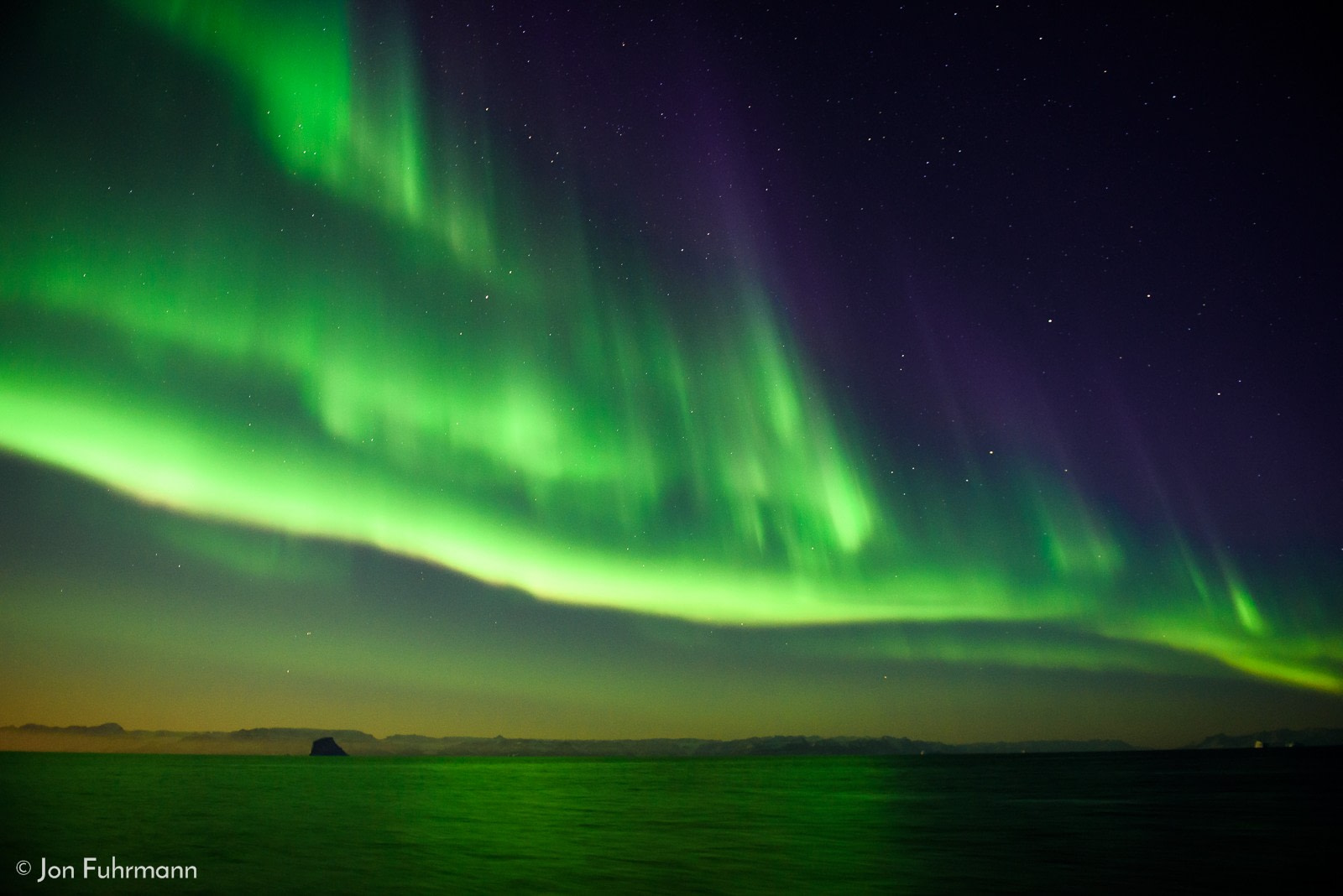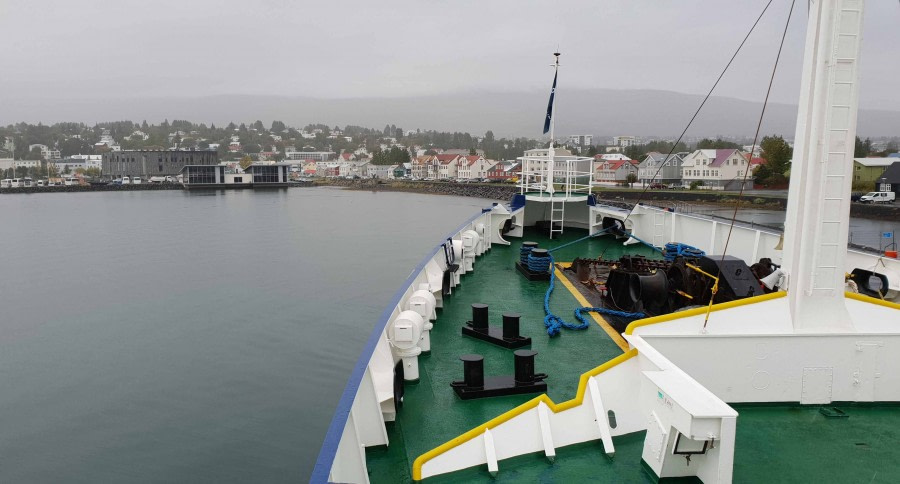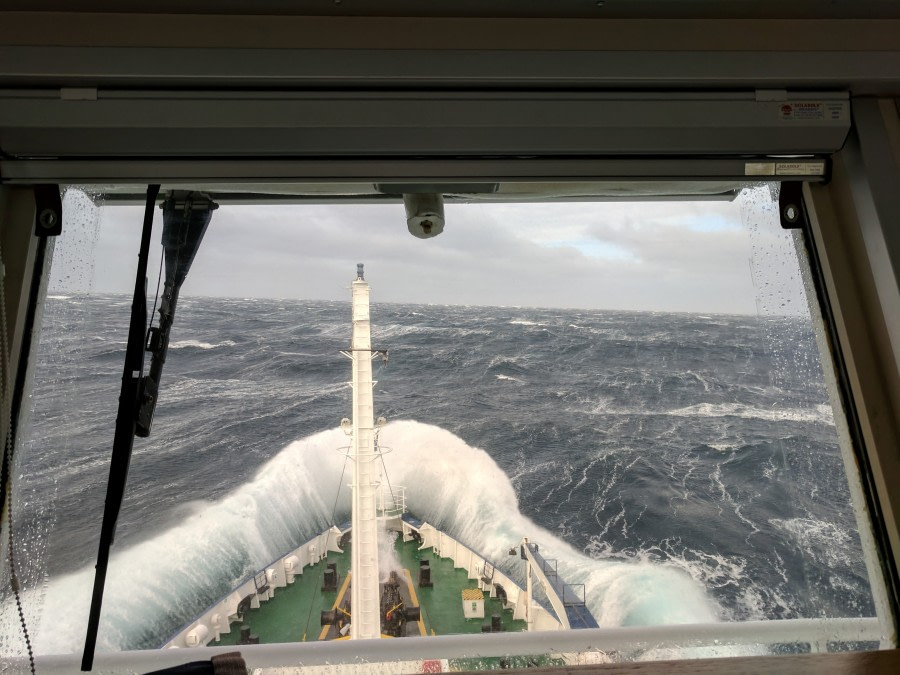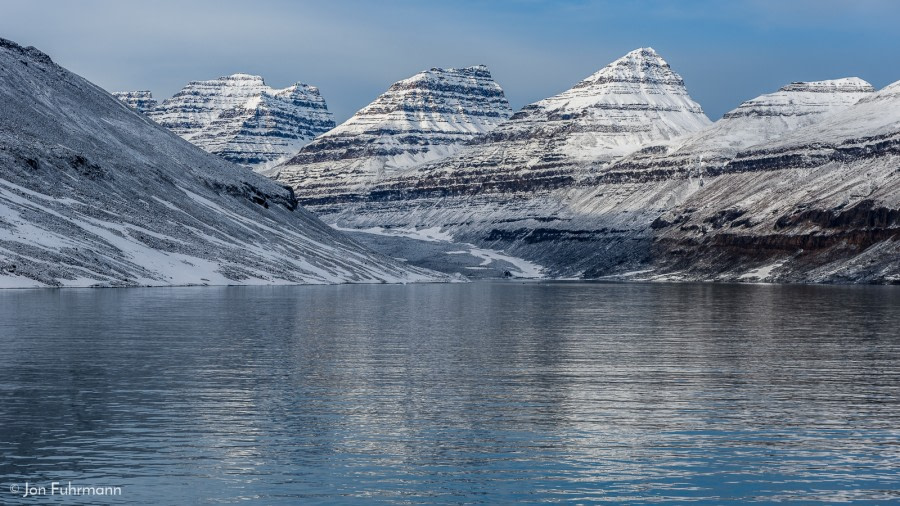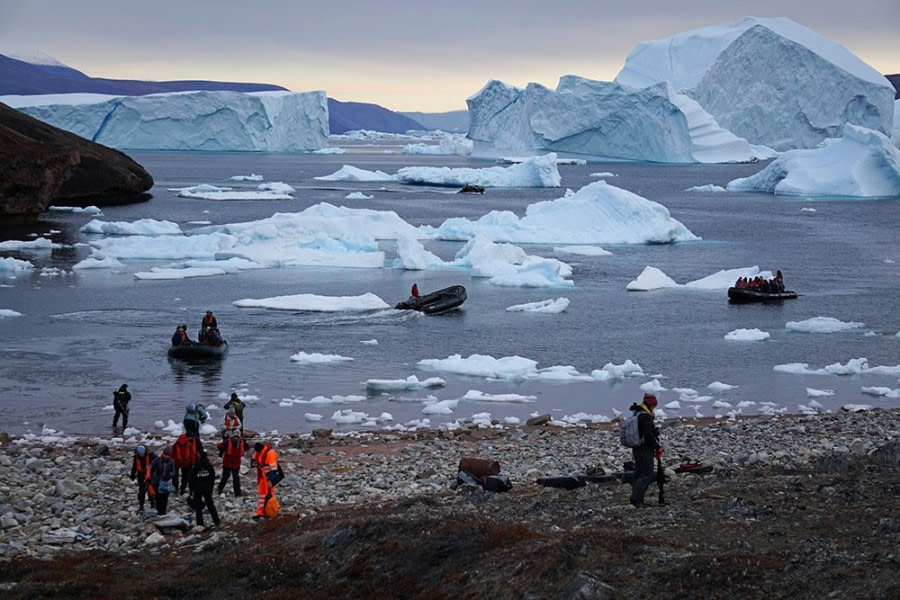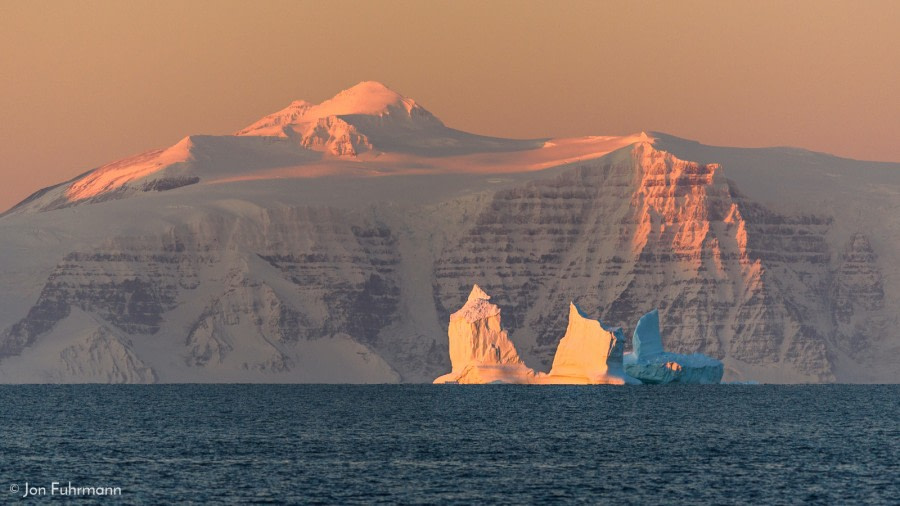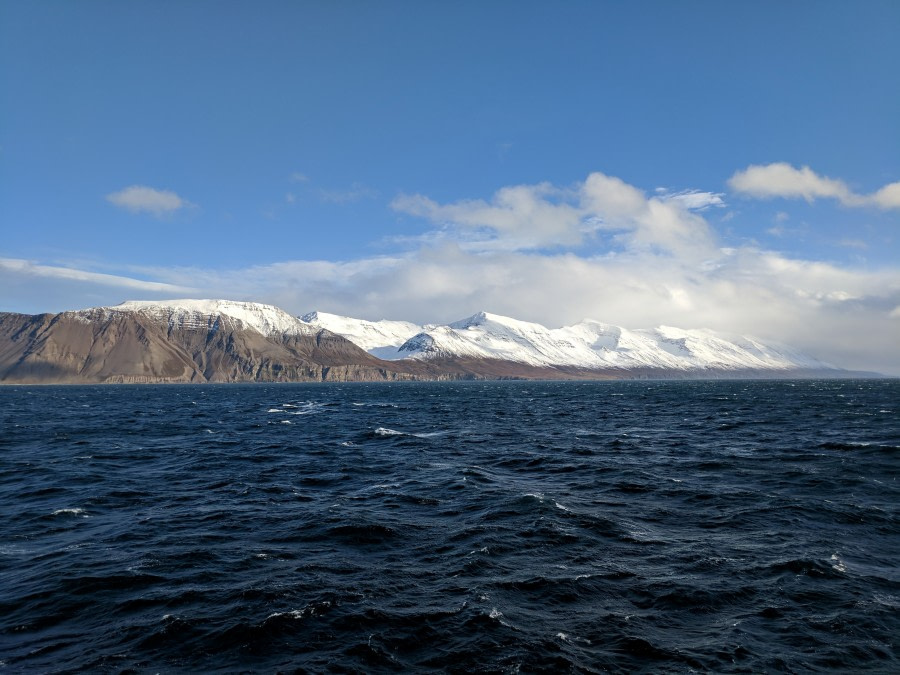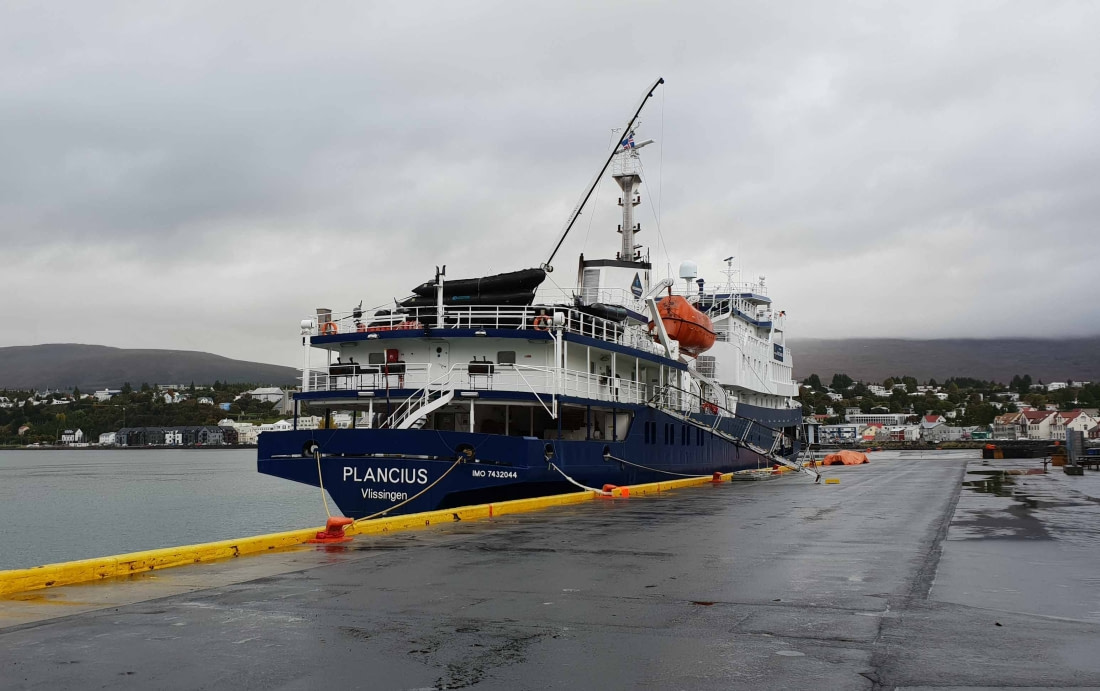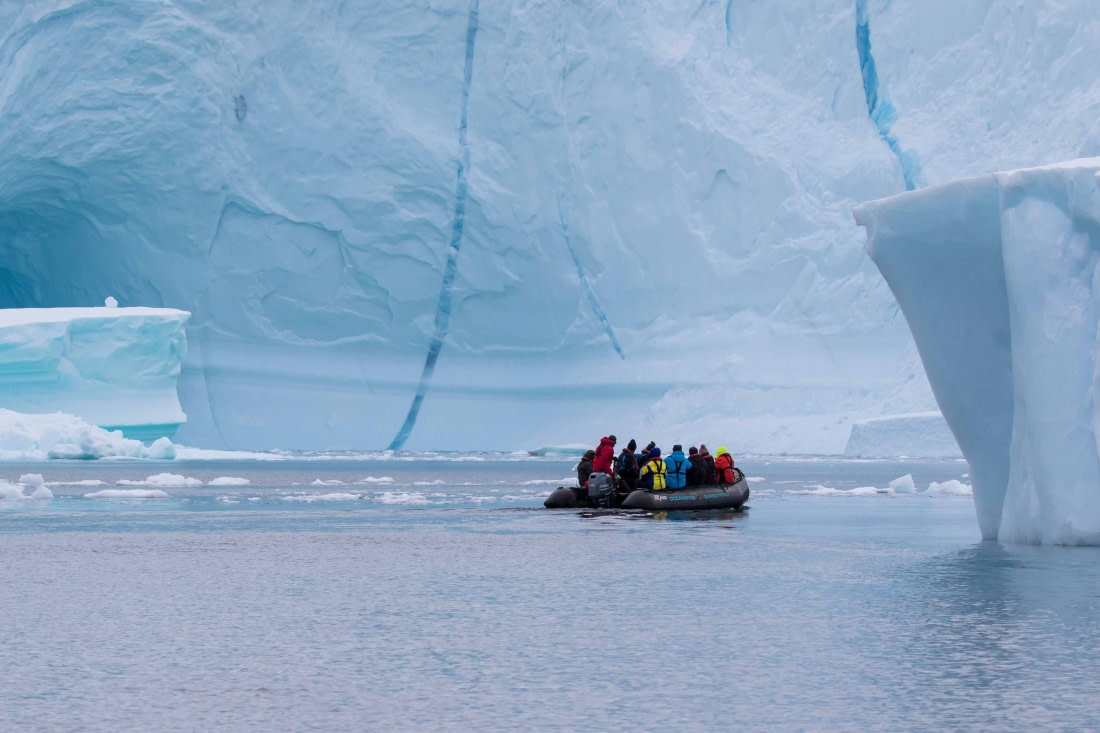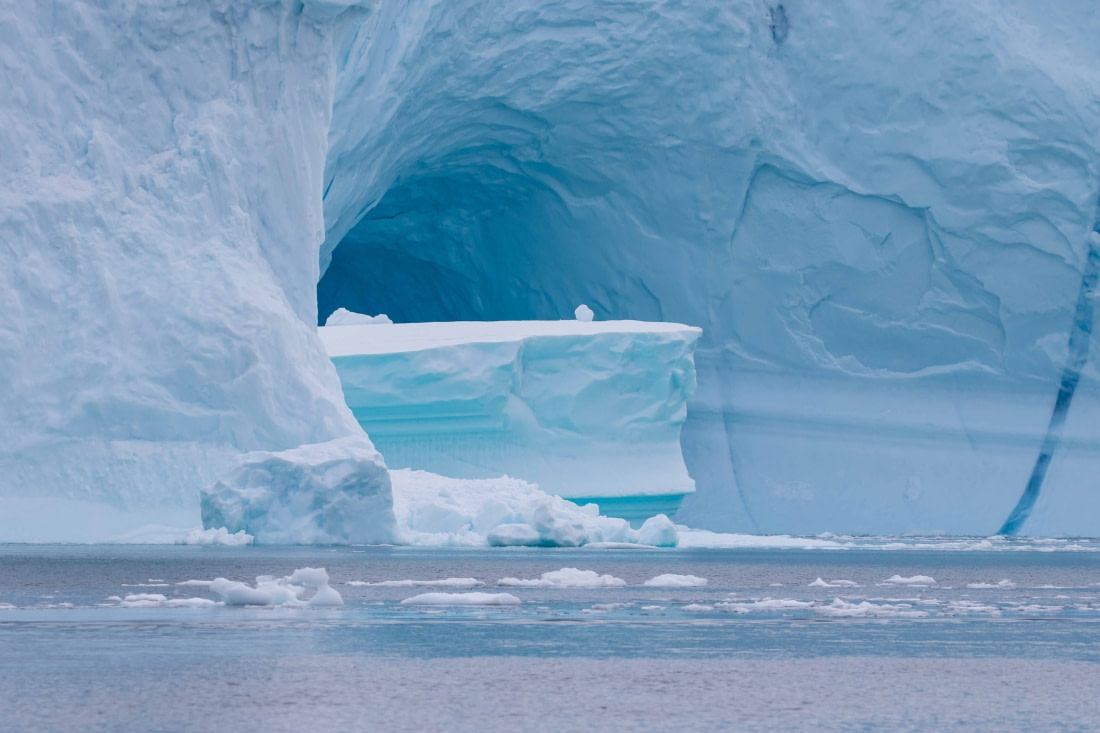| Date: | 18.09.2018 |
| Position: | 65°41.3’ N / 018°04.5’ W |
| Wind: | N |
| Weather: | cloudy, light rain |
| Air Temperature: | +8 |
We get our first glimpse of Plancius from the bus. She awaits us quietly at the end of Akureyri’s wharf. Her bright blue hull contrasts with the dull, colorless surroundings: the city has been imprisoned in a thick fog for weeks now, and one can barely distinguish the other side of the fjord. A light rain greets us, but also the much warmer “welcome onboard!” of crewmembers, who take care of our luggage and show us the way to our cabins. We readily start exploring the ship, striding along corridors and decks, excited like kids discovering a new playground. We rapidly find our way to the restaurant, the reception, the bridge, or the observatory lounge. We gather in the latter for a mandatory security briefing given by our third officer Mindo. He warns us: the “Little Drake” (the stretch of sea that separates us from Greenland) may live up to its name! Bad weather is forecasted and the crossing will be rough! Debate ensues: to take medicine, or not to take medicine? That is the question. A drill, necessary simulation of the ship’s evacuation in case of an emergency, follows Mindo’s presentation. An hour (and a few drinks) later, our hotel manager Zsuzsanna explains the rules of life onboard. We are then introduced to our captain Alexey, from Russia, and to our international expedition team. Beau is the expedition leader. This charismatic Canadian who has worked for many years as a guide in the arctic and Antarctica, was pretty much born a guide, as he grew up hunting and fishing in the wilderness of northern Ontario. Arjen from The Netherlands is Beau’s assistant. This former biology teacher decided, fifteen years ago, that he preferred open air “classrooms” of Polar Regions. Jonathan from Austria, Laurence from the UK and Andreas from Germany, are glaciologists: three specialists, as we expect to see ice where we are going! Isabelle from Germany and Marie from France are marine and evolutionary biologists, respectively. Daniel is a professional photographer who also guides in Iceland and Lapland. Finally, William from Scotland, Catherine and Michael from the UK, and their leader Heinrick from Sweden who has been among the first to lead diving trips in Antarctica, constitute the “diving team” as a group of skilled divers onboard will undergo underwater explorations. As Beau jokes, all members of the expedition team are “bipolar”: these passionate fellows, badly infected by the infamous polar virus, all spend their time hopping from one pole to the other! Lise from Holland is the ship’s doctor, and as she points out not only is Greenland an isolated place, but bad weather is coming: we should be extra cautious…
